Glutamatergic input varies with phrenic motor neuron size
- PMID: 31389739
- PMCID: PMC6843086
- DOI: 10.1152/jn.00430.2019
Glutamatergic input varies with phrenic motor neuron size
Abstract
Like all skeletal muscles, the diaphragm muscle accomplishes a range of motor behaviors by recruiting different motor unit types in an orderly fashion. Recruitment of phrenic motor neurons (PhMNs) is generally assumed to be based primarily on the intrinsic properties of PhMNs with an equal distribution of descending excitatory inputs to all PhMNs. However, differences in presynaptic excitatory input across PhMNs of varying sizes could also contribute to the orderly recruitment pattern. In the spinal cord of Sprague-Dawley rats, we retrogradely labeled PhMNs using cholera toxin B (CTB) and validated a robust confocal imaging-based technique that utilizes semiautomated processing to identify presynaptic glutamatergic (Glu) terminals within a defined distance around the somal membrane of PhMNs of varying size. Our results revealed an ~10% higher density of Glu terminals at PhMNs in the lower tertile of somal surface area. These smaller PhMNs are likely recruited first to accomplish lower force ventilatory behaviors of the diaphragm as compared with larger PhMNs in the upper tertile that are recruited to accomplish higher force expulsive behaviors. These results suggest that differences in excitatory synaptic input to PhMNs may also contribute to the orderly recruitment of diaphragm motor units.NEW & NOTEWORTHY The distribution of excitatory glutamatergic synaptic input to phrenic motor neurons differs across motor neurons of varying size. These findings support the size principle of motor unit recruitment that underlies graded force generation in a muscle, which is based on intrinsic electrophysiological properties of motor neurons resulting from differences in somal surface area. A higher density of glutamatergic inputs at smaller, more excitable motor neurons substantiates the earlier and more frequent recruitment of these units.
Keywords: 3D-reconstruction; glutamate; neuromotor control; phrenic motor neurons; presynaptic inputs; spinal cord.
Conflict of interest statement
No conflicts of interest, financial or otherwise, are declared by the authors.
Figures
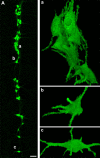
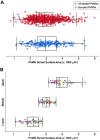
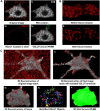

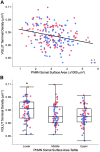
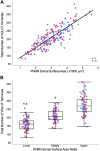
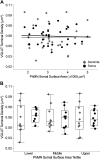
Similar articles
-
Size-dependent differences in mitochondrial volume density in phrenic motor neurons.J Appl Physiol (1985). 2023 Jun 1;134(6):1332-1340. doi: 10.1152/japplphysiol.00021.2023. Epub 2023 Apr 6. J Appl Physiol (1985). 2023. PMID: 37022966 Free PMC article.
-
Disproportionate loss of excitatory inputs to smaller phrenic motor neurons following cervical spinal hemisection.J Physiol. 2020 Oct;598(20):4693-4711. doi: 10.1113/JP280130. Epub 2020 Aug 19. J Physiol. 2020. PMID: 32735344 Free PMC article.
-
Heterogeneous glutamatergic receptor mRNA expression across phrenic motor neurons in rats.J Neurochem. 2020 Jun;153(5):586-598. doi: 10.1111/jnc.14881. Epub 2019 Oct 17. J Neurochem. 2020. PMID: 31563147 Free PMC article.
-
Phrenic motor unit recruitment during ventilatory and non-ventilatory behaviors.Respir Physiol Neurobiol. 2011 Oct 15;179(1):57-63. doi: 10.1016/j.resp.2011.06.028. Epub 2011 Jul 6. Respir Physiol Neurobiol. 2011. PMID: 21763470 Free PMC article. Review.
-
Convergence of pattern generator outputs on a common mechanism of diaphragm motor unit recruitment.Prog Brain Res. 2014;209:309-29. doi: 10.1016/B978-0-444-63274-6.00016-3. Prog Brain Res. 2014. PMID: 24746055 Free PMC article. Review.
Cited by
-
Cell-Based Measurement of Mitochondrial Function in Human Airway Smooth Muscle Cells.Int J Mol Sci. 2023 Jul 15;24(14):11506. doi: 10.3390/ijms241411506. Int J Mol Sci. 2023. PMID: 37511264 Free PMC article.
-
Quantifying mitochondrial volume density in phrenic motor neurons.J Neurosci Methods. 2021 Apr 1;353:109093. doi: 10.1016/j.jneumeth.2021.109093. Epub 2021 Feb 4. J Neurosci Methods. 2021. PMID: 33549636 Free PMC article.
-
Heterogeneous distribution of mitochondria and succinate dehydrogenase activity in human airway smooth muscle cells.FASEB Bioadv. 2024 May 28;6(6):159-176. doi: 10.1096/fba.2024-00047. eCollection 2024 Jun. FASEB Bioadv. 2024. PMID: 38846375 Free PMC article.
-
Size-dependent differences in mitochondrial volume density in phrenic motor neurons.J Appl Physiol (1985). 2023 Jun 1;134(6):1332-1340. doi: 10.1152/japplphysiol.00021.2023. Epub 2023 Apr 6. J Appl Physiol (1985). 2023. PMID: 37022966 Free PMC article.
-
Automated Classification of Whole Body Plethysmography Waveforms to Quantify Breathing Patterns.Front Physiol. 2021 Aug 20;12:690265. doi: 10.3389/fphys.2021.690265. eCollection 2021. Front Physiol. 2021. PMID: 34489719 Free PMC article.
References
-
- Bae YC, Nakamura T, Ihn HJ, Choi MH, Yoshida A, Moritani M, Honma S, Shigenaga Y. Distribution pattern of inhibitory and excitatory synapses in the dendritic tree of single masseter α-motoneurons in the cat. J Comp Neurol 414: 454–468, 1999. doi:10.1002/(SICI)1096-9861(19991129)414:4<454:AID-CNE3>3.0.CO;2-7. - DOI - PubMed
Publication types
MeSH terms
Substances
Grants and funding
LinkOut - more resources
Full Text Sources

